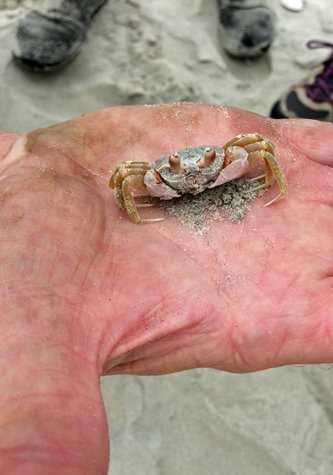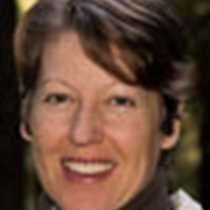“There is a way that nature speaks, that land speaks. Most of the time we are simply not patient enough, quiet enough, to pay attention to the story.” -Linda Hogan
Ah… here at last. The planning and packing and last-minute to-do’s… the travels by car and plane and bus have brought us – finally -- to the National Geographic Sea Lion. We awakened this morning anchored in Bahia Magdalena to revitalizing sea air among cloudy skies and 64 degrees Fahrenheit. Early risers climbed aboard expedition landing crafts and zipped ashore to Isla Magdalena for walks and photos at first light. Low tide meant wading in the refreshing water to the sandy shoreline. A bit of orange and yellow streaked through the cloud layers at sunrise. Back aboard for breakfast (except for one adventurer who preferred to commune with the dunes the entire morning) and then back ashore. This time, walks across this gorgeous barrier island to the crashing of the Pacific on the opposite side. If the Eskimos have a thousand words for snow, then the desert dwellers must have as many for sand. My bare feet delighted in the sensory experience ranging from dense mud to salt-encrusted to silky fine dunes. The sand acts as story-teller – history is written across its pages. Tracks of many creatures – including coyotes, rabbits, mice, beetles, birds, crabs– reveal the daily comings and goings of life here. Huge middens of shells conjure imaginings of earlier peoples feasting on the sea-life.
Coming over the rise of a dune, we hear it – the ocean – crashing against the shoreline. A coyote sits on a far-off dune, watching us as we watch it. Magnificent frigate birds fly overhead. Someone sees a jack-rabbit bounding off behind a dune in the other direction. The desert, it turns out, is full of life. Cresting the final group of dunes, the ocean comes into view, and as we descend we see why this place is nicknamed Sand Dollar Beach. Sand dollars lined up along the full-moon high tide line – just out of reach of the dunes – for miles. And the beach itself stretching out for miles in either direction. Stunningly beautiful. We come across the carcass of a pelican. And several hundred yards another. And yet another. At first glance, death may seem dismal. But death, too, is life. Coyote tracks surround the pelican remains, and at the latter, several crab holes, and the crabs themselves breakfasting. I walk down the beach a bit further and am beckoned up to the dunes. Perhaps if I climb that one there, I will see a coyote or rabbit that was flushed in this direction by our walking? I come across something white gleaming buried in the sand. Hmmm, not a shell. Before I know it I am kneeling, using my hands and fingers to gently unearth the skull of a common dolphin. The treasures here abound. A few hearty souls opt for an invigorating dip in the ocean’s bounty. And then we are making our way back across to our awaiting Mother Ship.
Back onboard, we go through the standard early trip drill, briefings, intro… have lunch… and then it’s nap time for many. The ship is underway northbound for the next 18 hours towards Laguna San Ignacio. In the mid-afternoon the photo team gathers for Photo Essentials presentation and break-out sessions with cameras. And later, a talk on gray whales by one of our Naturalists, to prepare us for tomorrow’s adventures. Bienvenido a Baja!







